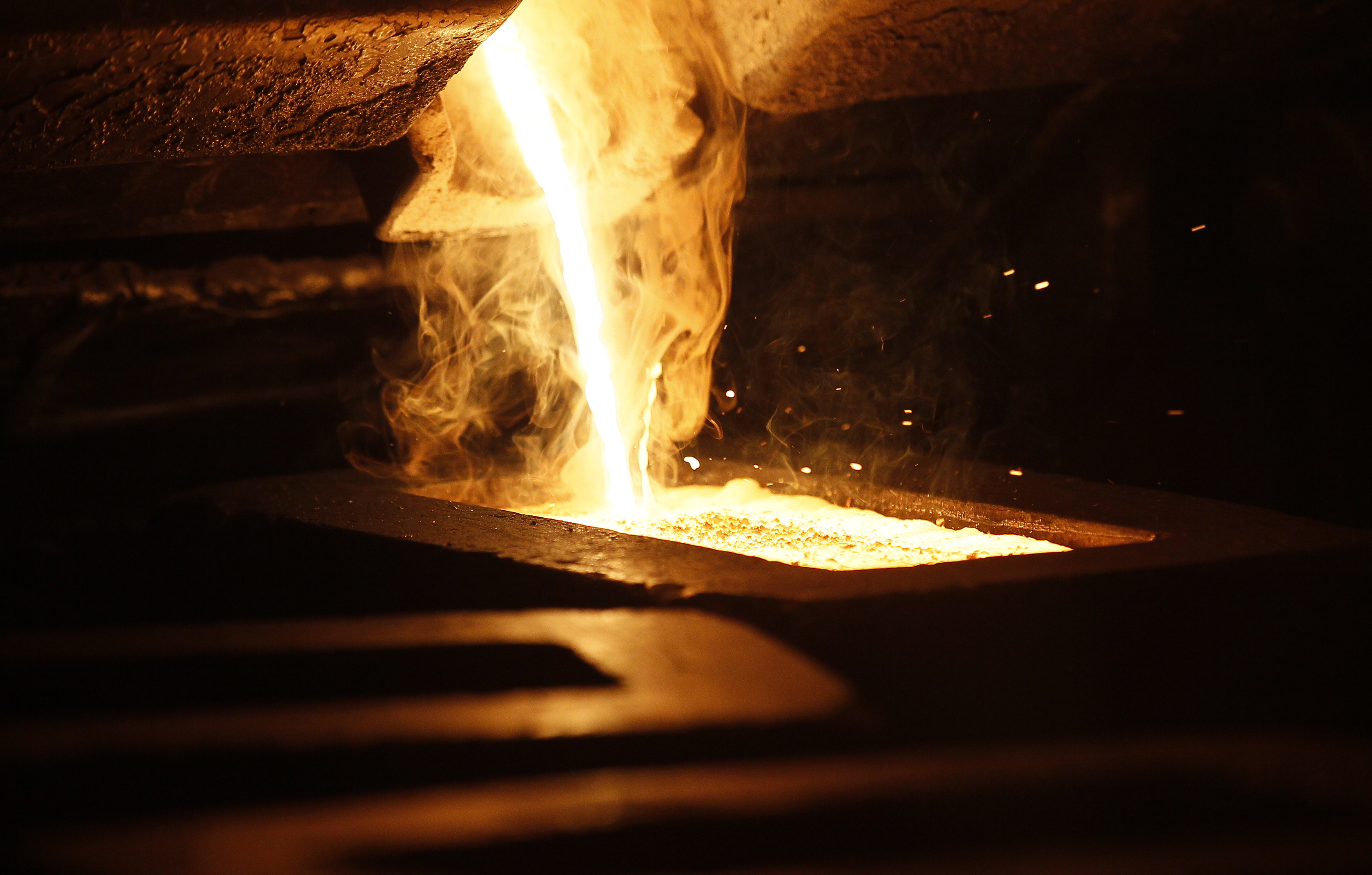
Liquid gold is poured to form gold dore bars at Newmont Mining's Carlin gold mine operation near Elko, Nevada, May 21, 2014. REUTERS/Rick Wilking
LONDON, May 31 (Reuters Breakingviews) - Gold Fields’(GFIJ.J) long history is a present-day headache in more ways than one. The $9 billion South African bullion producer is reluctant to talk about its roots, which trace back to its founding by rapacious British imperialist Cecil Rhodes in 1887. These days the company has only one set of operations in South Africa. But Chief Executive Chris Griffith has to deal with the problem of ageing mines. That explains why he is paying up for Canadian rival Yamana Gold (YRI.TO) in a $6.7 billion deal.
With the gold price riding high at $1,800 or more an ounce since the start of the pandemic, it’s hard to feel sorry for Griffith or his rivals at behemoths like $54 billion Newmont (NEM.N) or $37 billion Barrick Gold (ABX.TO). Last year, the trio dug out the precious metal at an all-in cost of around $1,050 an ounce. Any proceeds above that figure flow pretty much straight to the bottom line. Gold Fields’ EBITDA has doubled since 2019, as has its market value.
The temptation for miners is to start digging new, bigger holes, or hit the acquisition trail. Both are risky. By the time a new mine opens in, say, four years, the bullion price may have retreated, leaving the project in the red. And scooping up a rival when prices are high means locking in an elevated valuation.
Griffith has partly avoided the latter pitfall by paying for Yamana in shares. However, the financial jury remains out. Gold Field’s offer implies a premium of 33%, using both companies’ volume-weighted average share prices over the 10 days before the announcement, or about $1.6 billion. That compares with savings of $40 million a year, which have a net present value of about $350 million, after deducting tax. Little wonder that Gold Fields’ share price fell 20% on Tuesday.
However, there may be a deeper logic. At current production rates of 2.3 million ounces a year, Gold Fields’ mature mines in Africa and South America will be exhausted in 21 years. Adding in Yamana’s more youthful operations in North and South America will extend that day of reckoning to 25 years, longer than Barrick and Newmont. Extending the company’s existence is sensible, but not if it gives shareholders grey hair.
Follow @edwardcropley on Twitter
(The author is a Reuters Breakingviews columnist. The opinions expressed are his own.)
CONTEXT NEWS
South Africa’s Gold Fields said on May 31 it had agreed to buy Canada’s Yamana Gold in an all-share transaction to create the world’s fourth-largest bullion producer.
The Johannesburg-listed miner said Yamana shareholders would receive 0.6 Gold Fields shares for every share in the Canadian company, giving them 39% of the combined group.
Based on both companies’ 10-day volume-weighted average share price, the transaction values Yamana at $6.7 billion and represents a 34% premium, Gold Fields said.
The combined entity would have reserves of 81 million ounces in 14 mines globally, and annual production of nearly 3.2 million ounces. Annual synergies from the deal would amount to $40 million before tax.
Gold Fields shares were down 13% 165.75 rand by 1330 GMT on May 31. Yamana shares were up 4% at 7.05 Canadian dollars.